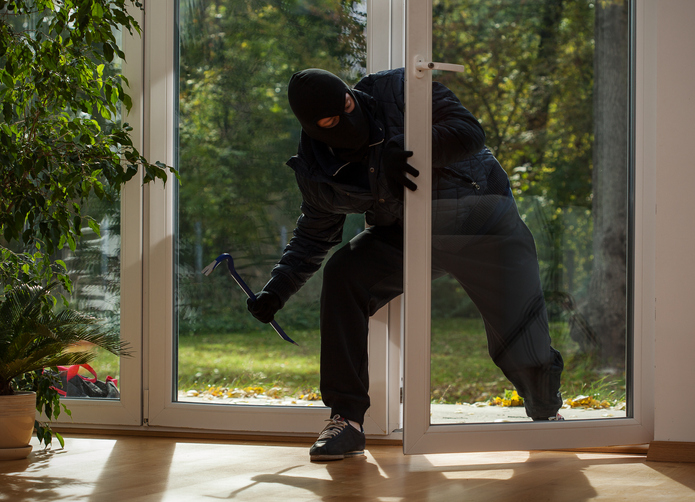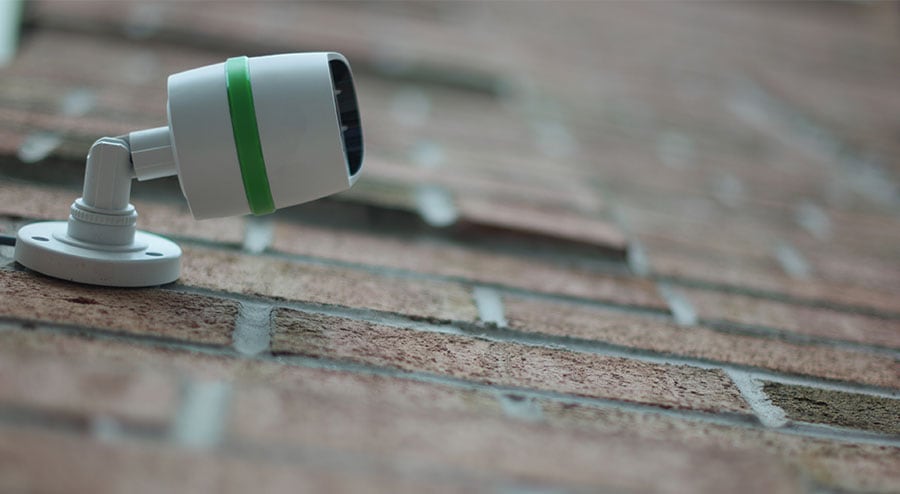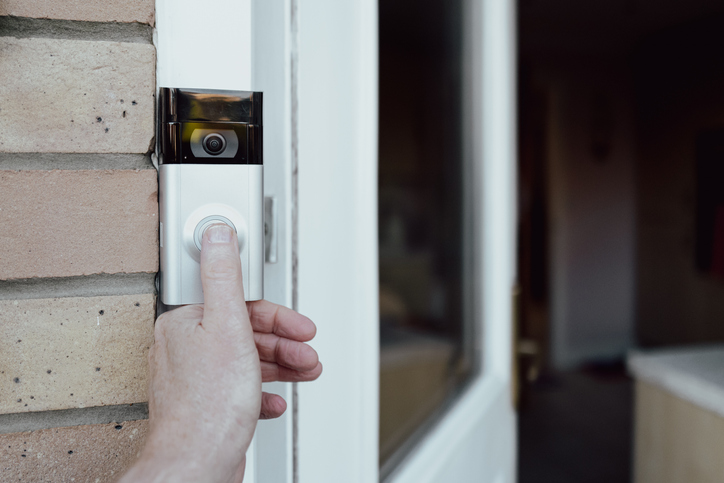Home security alarms are an essential aspect of protecting your home from intruders. With the increasing importance of safety and security, these alarm systems provide a crucial line of defense, giving homeowners peace of mind and deterring potential threats. By understanding how these alarms work, exploring different types available, and considering important factors when choosing a system, you can take proactive steps toward ensuring the safety of your home.

How Home Security Alarms Work
Home security alarms are designed to detect and alert homeowners of potential intrusions into their homes. These alarms work on the principle of detecting changes or disturbances in the environment and triggering an alert signal. When an intrusion is detected, the alarm system initiates a series of actions, such as sounding a loud alarm, sending notifications to the homeowner or a monitoring center, and activating any connected security devices.
Components Of Home Security Alarm Systems
A typical home security alarm system consists of several essential components that work together to provide effective protection against intruders. These components include sensors, a control panel, and alarms.
Sensors are fundamental elements of a home security alarm system as they detect changes or disturbances in the environment. Door/window sensors are commonly used and are installed on entry points such as doors and windows. They monitor whether these access points are opened or closed. Motion sensors are another type of sensor used in home security alarms. These sensors use infrared technology to detect movement within their range, alerting the system if any unauthorized motion is detected. Glass break sensors are designed to detect the sound frequency and vibrations produced by broken glass, triggering an alarm when a window is shattered. Some home security alarm systems may also include smoke/heat detectors as part of their sensor lineup, providing an early warning in the event of a fire.
The control panel acts as the central processing unit of the home security alarm system. It receives signals from the sensors and processes them to determine if an intrusion has occurred. Equipped with a keypad, the control panel allows homeowners to arm or disarm the system. It serves as the main interface for controlling and configuring the alarm system, providing status updates, and activating or deactivating various features.
Alarms are an integral part of home security alarm systems. When an intrusion is detected, the alarm is triggered, emitting a loud noise or sound. The purpose of the alarm is twofold: to alert the occupants and to deter intruders. The loud noise serves as an immediate deterrent, drawing attention to the potential break-in and increasing the likelihood of the intruders fleeing the premises quickly. Alarms can be standalone devices or integrated into the control panel, depending on the specific system.
Effectiveness Of Home Security Alarms In Deterring Burglars
Research has consistently shown that homes with visible security systems, including alarms, are significantly less likely to be targeted by intruders. The presence of an alarm acts as a deterrent, as burglars prefer to target easier, unprotected properties.
Home security alarms not only alert occupants and neighbors to an intrusion but also create a sense of urgency for the intruders to flee the premises quickly. The loud alarm sound serves as a strong deterrent and draws attention to the potential break-in. Additionally, if the alarm system is connected to a monitoring center, the quick response from authorities can further discourage intruders and minimize the time they spend inside the property.
Furthermore, modern home security alarm systems often come with additional features such as remote monitoring, smartphone integration, and video surveillance. These features enhance the effectiveness of the alarm system by providing real-time alerts, remote access, and the ability to monitor the property from anywhere, increasing the overall security of the home.
Types of Home Security Alarms
When it comes to safeguarding your home from potential intruders, choosing the right type of home security alarm system is crucial. There are various types available, including wired, wireless, and monitored systems, each offering unique features and benefits to meet your specific security needs.
Wired Home Security Alarm Systems
Wired home security alarm systems have long been a reliable choice for homeowners seeking robust and dependable security. These systems utilize physical wiring to connect the various components, such as sensors, control panels, and alarms. One of the key advantages of wired systems is their renowned reliability. Since they rely on physical connections, they are less susceptible to interference from external factors like wireless signal disruptions or power outages. This reliability ensures that the system functions consistently, providing homeowners with peace of mind.
Another benefit of wired home security alarm systems is their durability. The physical wiring used in these systems is typically strong and resilient, ensuring a stable and long-lasting connection between the components. The durability of the wiring further contributes to the overall reliability of the system.
Wired systems also offer a lower risk of hacking compared to their wireless counterparts. As they do not rely on wireless signals, which could potentially be intercepted or manipulated, the wired systems provide an added layer of security against hacking attempts.
Additionally, wired home security alarm systems have the advantage of expansion capability. Homeowners can easily extend the wiring network to accommodate additional sensors or devices, allowing them to customize and expand their security system as their needs evolve over time. This flexibility ensures that the system can adapt to changing security requirements.
Wireless Home Security Alarm Systems
Wireless home security alarm systems have gained significant popularity in recent years due to their ease of installation and flexibility. These systems utilize wireless technology to communicate between the different components, eliminating the need for physical wiring.
One of the main advantages of wireless systems is their easy installation process, making them an attractive option for homeowners who prefer a DIY approach. Without the need for drilling holes or running cables, wireless systems can be set up quickly and conveniently. This makes them particularly suitable for renters or individuals who may need to relocate their security system in the future.
Another benefit of wireless systems is their flexibility in sensor placement. Sensors can be easily installed in various areas of the house without being limited by wiring or the availability of power outlets. This flexibility allows for customization and optimization of the system based on the specific layout and security requirements of the home. Additionally, wireless systems often come with remote access and control features, enabling homeowners to arm or disarm the system, receive real-time notifications, and monitor their property from anywhere using mobile apps or web interfaces.
Monitored Home Security Alarm Systems
Monitored home security alarm systems provide an added layer of protection by connecting the alarm system to a professional monitoring center. When an alarm is triggered, the monitoring center receives an alert and can take immediate action.
One of the key benefits of monitored systems is their 24/7 monitoring capability, ensuring round-the-clock surveillance and response, even when homeowners are away or unable to address an alarm event. The quick response from the monitoring center can include contacting the homeowner to verify the alarm, dispatching emergency services, or notifying the appropriate authorities. This rapid response helps to minimize the potential damage or loss resulting from an intrusion. Moreover, the knowledge that their property is being monitored by trained professionals can act as a strong deterrent, discouraging potential intruders.
Monitored systems may also offer additional services such as fire and carbon monoxide monitoring, medical alert services, or video surveillance monitoring, providing homeowners with comprehensive security solutions tailored to their needs. Though monitored systems typically involve monthly subscription fees, the benefits they offer in terms of enhanced security and peace of mind often outweigh the associated costs, particularly for homeowners who prioritize professional monitoring and swift response capabilities.
Choosing The Right Home Security Alarm System
Choosing the right home security alarm system requires careful consideration of several factors to ensure it meets your specific needs and provides effective protection for your home. One of the first factors to consider is your budget, as it helps determine the type and features of the system you can afford. Consider the size and layout of your home to determine the number and placement of sensors needed for comprehensive coverage. Larger homes may require more sensors and a more extensive system to ensure all areas are adequately protected.
Another important factor is the desired level of security. Assess whether you need basic protection or advanced features such as video surveillance, remote monitoring, or integration with other security devices. Additionally, you must decide whether you prefer a DIY installation or professional assistance. While DIY options provide flexibility and cost savings, professional installation ensures proper setup and optimal performance.
Consider the scalability of the system. If you anticipate expanding or upgrading your security system in the future, choose a system that allows for easy integration of additional sensors or devices. By carefully considering these factors, you can make an informed decision and choose the home security alarm system that best fits your requirements.
Special Features
When evaluating home security alarm systems, it’s essential to pay attention to key features that contribute to the system’s effectiveness and convenience. One crucial feature to consider is the presence of reliable motion sensors that can detect any movement within their range, ensuring comprehensive coverage of your home. Additionally, door/window sensors are important as they monitor entry points and alert you if they are opened or tampered with.
The control panel is another critical component, and it’s important to choose a system with a user-friendly interface that allows for easy arming, disarming, and configuration of the system. Alarm options should be evaluated, with a focus on selecting alarms that are loud enough to be heard both inside and outside the house, acting as a strong deterrent to potential intruders.
Remote access and monitoring capabilities are also valuable, enabling you to control and monitor the system remotely through mobile apps or web interfaces, providing convenience and peace of mind. A battery backup feature is important to maintain system functionality during power outages.
Integration With Smart Home Devices
Integrating your home security alarm system with smart home devices can greatly enhance both the security and convenience of your home. There are several integration options to consider.
You can connect your alarm system with smart locks, enabling you to remotely lock and unlock doors, granting authorized access and adding an extra layer of security. Another option is to integrate security cameras with your alarm system, allowing for video surveillance. This integration provides the ability to view live feeds or recorded footage from your mobile device, enhancing monitoring capabilities.
Integrating your alarm system with smart lighting allows you to create an illusion of occupancy by automatically turning lights on and off when you’re away, increasing home security. Voice assistants such as Amazon Alexa or Google Assistant can also be integrated, allowing you to control your alarm system through voice commands.
Consider alarm systems that offer home automation capabilities, enabling you to control not only your security system but also other connected devices such as thermostats, door locks, and garage doors for a comprehensive smart home experience. By exploring these integration options, you can create a seamlessly connected ecosystem that enhances both the security and convenience of your home.
Installation And Maintenance Of Home Security Alarms
When it comes to home security alarm systems, proper installation, and regular maintenance are crucial to ensure optimal performance and reliability. From the initial setup to ongoing testing and upkeep, these practices help safeguard your home and maintain the effectiveness of your security system.
Steps To Install A Home Security Alarm System
Installing a home security alarm system requires careful planning and execution to ensure its effectiveness. Here are the key steps involved in the installation process:
- System Planning – Begin by assessing your home’s layout and determining the optimal locations for sensors, control panels, and alarms. Consider vulnerable entry points, high-traffic areas, and areas of particular concern for sensor placement.
- Component Placement – Install the sensors, including door/window sensors, motion sensors, and other specialized sensors, according to the manufacturer’s guidelines. Ensure proper alignment and secure mounting to maximize their functionality.
- Control Panel Setup – Install the control panel in a central location that is easily accessible. Connect it to a power source and follow the manufacturer’s instructions for configuring the control panel settings.
- Wiring (if applicable) – If you have a wired system, ensure that the wiring is properly installed, concealed, and connected between the components. This step may require professional assistance if you are not experienced with electrical work.
- Alarm Testing – Once the installation is complete, thoroughly test the system to ensure that all sensors are functioning correctly and are properly communicating with the control panel. Test each sensor individually, as well as the overall functionality of the system.
- User Training – Familiarize yourself with the operation of the alarm system, including arming and disarming procedures, code management, and any additional features or functionalities. Train other household members on how to use the system effectively.
It’s important to note that while many home security alarm systems can be installed as do-it-yourself (DIY) projects, professional installation is also available. Professional installation ensures that the system is installed correctly and optimally, particularly for more complex or wired systems. If opting for DIY installation, carefully follow the manufacturer’s instructions and guidelines, and take necessary precautions to avoid any potential hazards or mistakes.
Regular Testing And Maintenance Of The System
Regular testing and maintenance are essential to ensure the ongoing functionality and reliability of your home security alarm system. Perform regular tests of the entire system, including sensors, control panels, alarms, and any connected devices. This helps identify any issues or malfunctions and ensures that the system is fully operational.
Periodically calibrate motion sensors to account for any changes in the environment that could affect their performance. This may include adjusting the sensitivity or detection range as needed.
Check and replace the batteries in sensors, control panels, and other devices as recommended by the manufacturer or when low battery alerts are indicated. Keeping fresh batteries ensures uninterrupted operation during power outages. Regularly clean the sensors and other components to prevent dust, debris, or obstructions that could interfere with their functionality. Follow manufacturer guidelines for proper cleaning procedures.
Stay updated with the latest firmware and software releases provided by the manufacturer. These updates often include security patches, bug fixes, and improved system performance. Keep yourself and other household members informed about the proper usage and care of the alarm system. Ensure everyone knows how to perform routine tests, recognize system alerts, and take appropriate action.
Preventing False Alarms
Preventing false alarms is an important aspect of maintaining a well-functioning home security alarm system and minimizing unnecessary disturbances. Ensure that all household members are thoroughly trained on how to properly use the alarm system. This includes understanding the arming and disarming procedures, code management, and the importance of avoiding accidental activations. Keep alarm codes and passwords secure and known only to authorized individuals. This prevents accidental triggering of the alarm system by unauthorized users or guests who may not be familiar with the proper usage.
Pay attention to the secure closure and alignment of doors and windows. Loose or misaligned entry points can trigger false alarms, so make sure they are properly closed and aligned with the sensors.
If you have pets, consider using pet-friendly motion sensors that can differentiate between pet movements and potential intruders. This helps prevent false alarms caused by pet activity while still maintaining reliable detection capabilities.
Enhanced Home Security
To enhance the security of your home, there are several measures you can take in addition to installing a home security alarm system. One crucial step is to reinforce your doors and windows. Invest in sturdy doors made of solid core or metal, and consider reinforcing windows with impact-resistant glass or security film. These measures make it more difficult for intruders to gain entry into your home.
Proper lighting is another important aspect of home security. Ensure that all entry points, pathways, and other vulnerable areas around your property are well-lit. Outdoor lighting serves as a deterrent to potential intruders and improves visibility, reducing the likelihood of unauthorized access. Consider installing motion sensor lights that activate when movement is detected, adding an extra layer of security.
Fire And Carbon Monoxide Detectors With The Alarm System
In addition to protecting against intrusions, it’s essential to prioritize safety measures within your home. Integrating fire and carbon monoxide detectors with your home security alarm system offers comprehensive protection.
Fire Detectors
Fire can pose a significant threat to your home and family. By integrating fire detectors with your alarm system, you can ensure early detection of smoke or heat, triggering immediate alerts. This allows for quick response and can save lives and property by providing valuable time to evacuate or take appropriate action.
Carbon Monoxide Detectors
Carbon monoxide is an odorless, colorless gas that can be lethal if undetected. Integrating carbon monoxide detectors with your alarm system adds an extra layer of safety. These detectors can monitor carbon monoxide levels in your home and activate alarms when dangerous levels are detected, allowing you to take necessary precautions and seek help promptly.
Costs And Considerations Of Home Security Alarms
When considering a home security alarm system, it’s important to understand the costs and various factors to make an informed decision. From the initial purchase and installation expenses to ongoing monitoring fees and maintenance costs, this section explores the financial considerations and additional factors to keep in mind for a comprehensive understanding of the overall investment.
Average Cost Range
The cost of purchasing and installing a home security alarm system can vary depending on several factors, including the system type, features, and the size of your home. On average, the cost range for a basic system can start from around $200 to $500. This typically includes essential components such as sensors, a control panel, and an alarm. However, more advanced systems from reputable brands such as ADT, Vivint, or SimpliSafe, with additional features like video surveillance, home automation integration, or smart device compatibility, can range from $500 to $2,000 or more. It’s important to consider your specific security needs and budget when selecting a system.
In addition to the initial purchase cost, professional installation by trusted companies like ADT or Vivint may incur additional fees. Professional installation ensures proper placement and configuration of the system components but can add anywhere from $100 to $500 or more to the overall cost, depending on the complexity of the installation.
Additional Costs
When budgeting for a home security alarm system, it’s important to consider additional costs beyond the initial purchase and installation. Two common ongoing costs are monthly monitoring fees and maintenance expenses.
If you opt for professional monitoring services, monthly fees typically range from $20 to $50 or more, depending on the level of service and the features included. These fees cover 24/7 monitoring by a professional monitoring center, immediate response to alarms, and access to additional services such as fire and carbon monoxide monitoring. While these fees contribute to enhanced security and peace of mind, they should be factored into your long-term budget.
Regular maintenance is essential to keep your home security alarm system in optimal working condition. Maintenance expenses may include battery replacements for sensors and control panels, software updates, and occasional repairs. While these costs may vary, it is advisable to allocate a portion of your budget for routine maintenance to ensure the reliability and longevity of your system.
Transferring Or Upgrading The System When Moving To A New Home
If your current system is compatible with your new home and meets your security needs, you can arrange to have it transferred to the new property. This may involve professional assistance to reinstall and reconfigure the system in the new location. Some systems allow for easy disassembly and reinstallation, while others may require additional components or adjustments.
Moving to a new home can be an opportunity to upgrade your home security alarm system. Evaluate your new home’s security requirements and consider any additional features or technology advancements that you may want to incorporate into your upgraded system. This may involve replacing some or all of the components to ensure optimal functionality and compatibility with your new home.
When moving to a new home, it is advisable to consult with security providers to discuss your options. They can provide guidance on transferring or upgrading your system and help you determine the most cost-effective and efficient solution based on your specific needs and the features of your new home.
Conclusion
Home security alarms play a crucial role in protecting your home from intruders. With their ability to detect and deter potential threats, these systems provide a sense of safety and peace of mind. By understanding how these alarms work, exploring different types available, considering important factors when choosing a system, and implementing additional measures, you can enhance the security of your home and create a safe environment for you and your loved ones. Remember, investing in a reliable home security alarm system is a proactive step towards safeguarding your most valuable asset.




